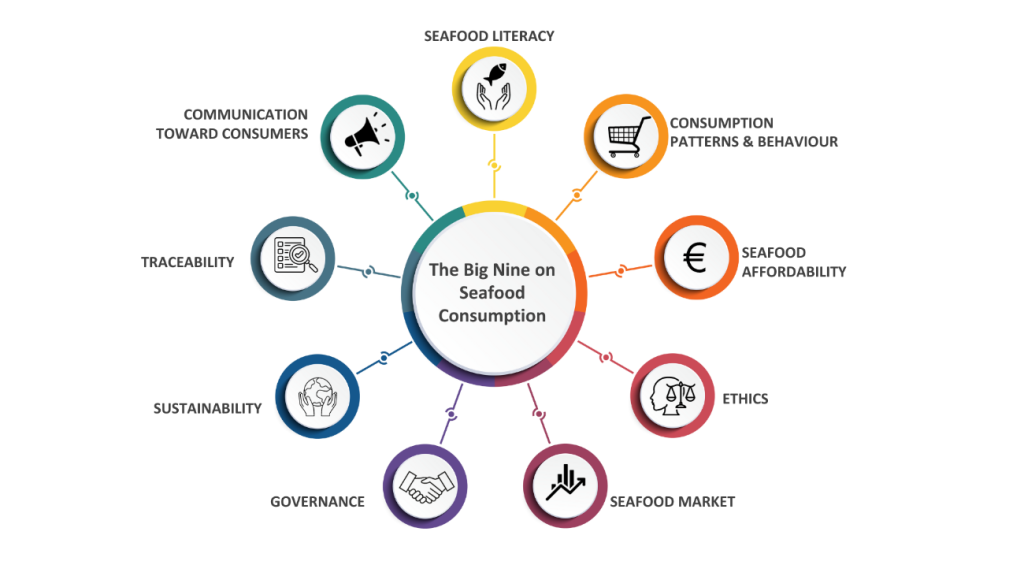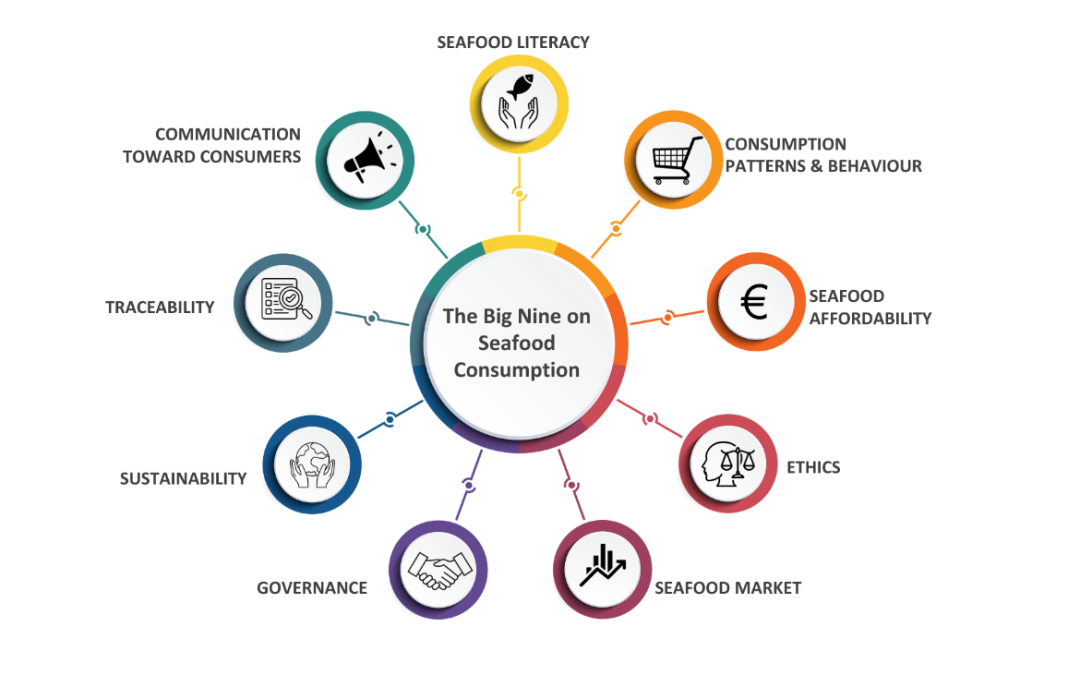One of SEA2SEE’s overarching objectives is to redefine how Europeans approach seafood consumption, aiming for a fundamental shift in purchasing and consumption behaviour and encouraging them to make responsible seafood choices. Research indicates that within the seafood industry, access to detailed product information, facilitated by the right tools and resources, has the potential to spark a move towards responsible consumption practices and informed decisions.
In order to fully understand the difficulties that the European consumers face when it comes to consuming seafood, a co-creation process was conducted to prioritise existing barriers and align with the reality in the project countries. This process followed the Collective Intelligence (CI) methods and involved a questionnaire and four multi-stakeholder workshops across France, Greece, Portugal, and Spain, where most of the pilot sites are located. The results from the co-creation process fed the development of the SEA2SEE strategy on consumer engagement, which is one of work package 2 deliverables.
The process unveiled nine critical barriers or areas of concern which seem to hamper responsible seafood consumption and product acceptance, and were common in the different countries. These range from lack of seafood literacy and rooted consumption patterns to affordability of products, ethics and lack of traceability along the value chain. The barriers reflect the complicated environment the project seeks to navigate and offer priceless insights into the complexities of sustainable seafood practices.
Let’s take a look at each of these barriers in more detail.

Seafood Literacy
The lack of seafood literacy is one of the main barriers to responsible seafood consumption that was found to be common in the 4 countries. Without education, it is difficult for consumers to understand why it is necessary to buy sustainable seafood products or to know how to do it. Furthermore, consumers are usually not aware of the status of fish stocks they consume or the impact of the different fishing gears. To overcome it, increasing consumers’ knowledge about the importance of preserving the sea’s resources and the products they consume, is key to changing their consumption habits.
Traceability
The lack of traceability information on seafood is also a common issue that contributes to consumer confusion regarding seafood sustainability. Without traceability information, consumers are prevented from making sustainable purchases as they cannot find the essential information needed to judge sustainability (fishing zone, fishing technique, etc.). More importantly, even if European regulations require traceability on labels, it is not uncommon to see incomplete labels on some products.
Communication Toward Consumers
A key issue related to traceability and seafood knowledge is the lack of clear communication with consumers. Important information like stock populations, best consumption practices, local species, seasonal availability, often does not reach the end consumers or is not presented clearly enough for them. This makes it hard to make informed and sustainable choices regarding seafood. Effective communication is essential to bridge the gap between consumers and sustainable seafood practices.
Consumption Patterns and Behaviour
Some habits, prejudices, and beliefs can be quite hard to change, especially when there is a lack of information or they are extremely rooted in the society. This is particularly true when it comes to seafood consumption habits where persistent prejudices remain a significant obstacle. For instance, in certain regions there exists a bias against aquaculture products. Additionally, fish morphology and perceived difficulty in manipulation and cooking techniques can serve as notable barriers to purchasing and consumption. Overcoming ingrained consumption patterns proves to be a challenging task, as consumers tend to gravitate towards what they’re familiar with, even when presented with sustainable alternatives.
Seafood Affordability
The price of seafood significantly impacts consumer choices. Many perceive seafood as a costly option, leading them to opt for alternatives or less sustainable options. Furthermore, there is a general mismatch in consumer perception of value and prices of products. This challenge could be addressed through greater transparency in pricing information. By providing clearer explanations about the connection between quality, pricing and its correlation with sustainability, consumers can make more informed decisions about their seafood purchases.
Ethics
Ethics is another aspect that influences seafood consumption: as people become more aware of ethical concerns surrounding the fishing and seafood industry, their choices and behaviours may change.
Seafood Market
The seafood market poses a significant barrier to sustainable consumption due to increasing prices, limited availability of sustainable options, and a lack of product diversity. Additionally, confusion between regulatory and commercial labelling hinders consumers from identifying truly sustainable choices.
Governance
One prominent barrier identified in the workshops was governance, encompassing several key issues. Firstly, there is the perception that in some countries safeguarding marine resources is not a top priority for the state, reflected in relatively lax regulations that fail to avoid overfishing. Additionally, there is also a lack of state involvement, particularly in terms of providing essential information and enforcing obligatory measures. All these governance-related issues hinder efforts toward sustainable seafood consumption.
Sustainability
The overarching concern of sustainability is a barrier in itself. Consumers are often unsure if the seafood they choose is truly sustainable and this uncertainty can deter them from making responsible choices. Sometimes there is a mismatch between what consumers think sustainability means and what it really is. Additionally, the lack of sustainable options makes the choice even harder for consumers. Furthermore, insufficient information regarding sustainability criteria on the labels is a barrier to responsible choices. This barrier is interlinked with the lack of seafood literacy and education of consumers.
The next step in this process is to address all these barriers to empower end-consumers, increase their trust in sustainable fishing and aquaculture practices and promote seafood literacy. In this regard, the workshops helped to identify possible solutions to these challenges, all of which were carefully considered in the development of the engagement strategy.
Stay tuned for updates about the upcoming engagement activities and opportunities to join us in this journey toward responsible seafood consumption. More information on the Collective Intelligence process and a detailed presentation of the identified barriers could be found in Deliverable D2.3.

